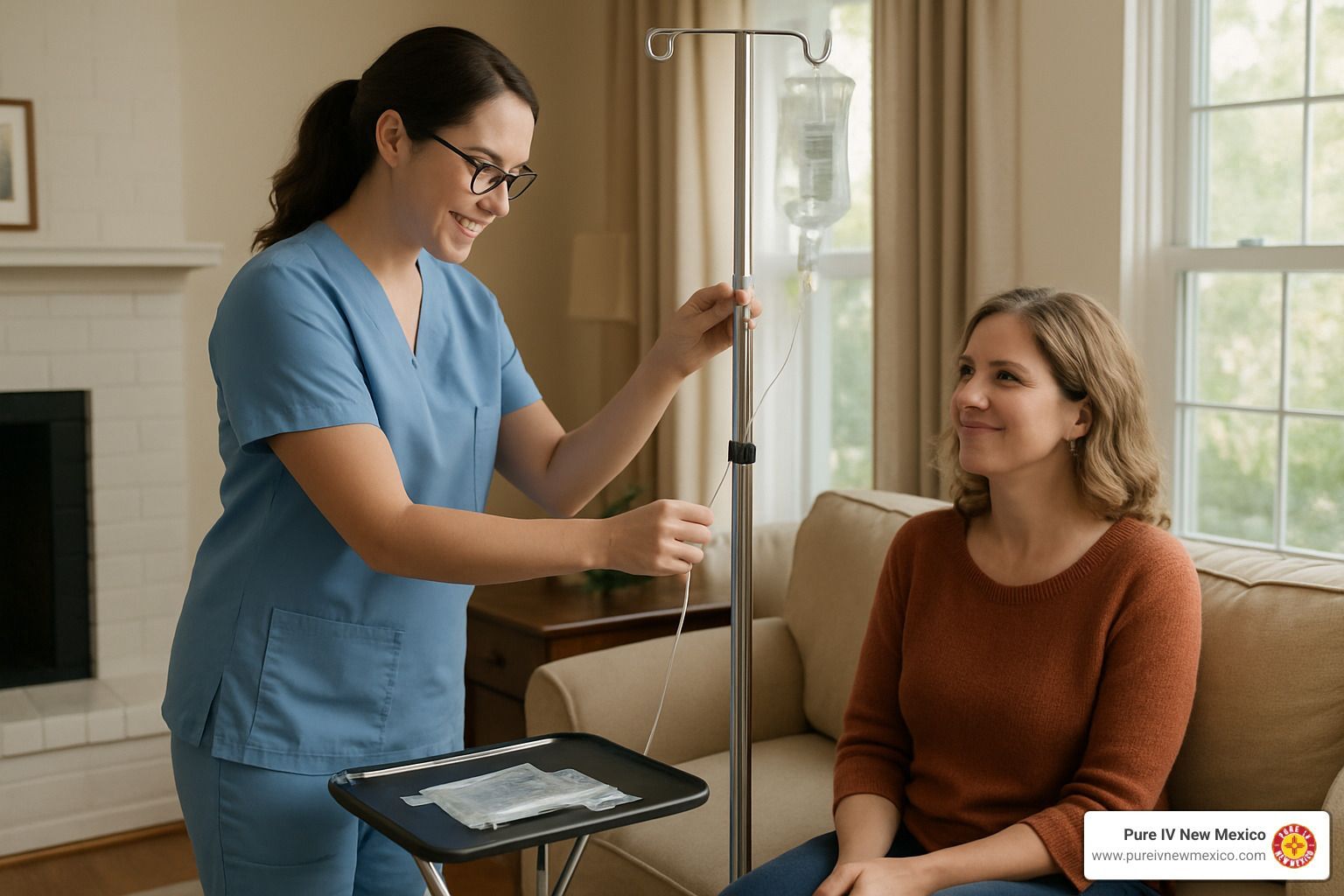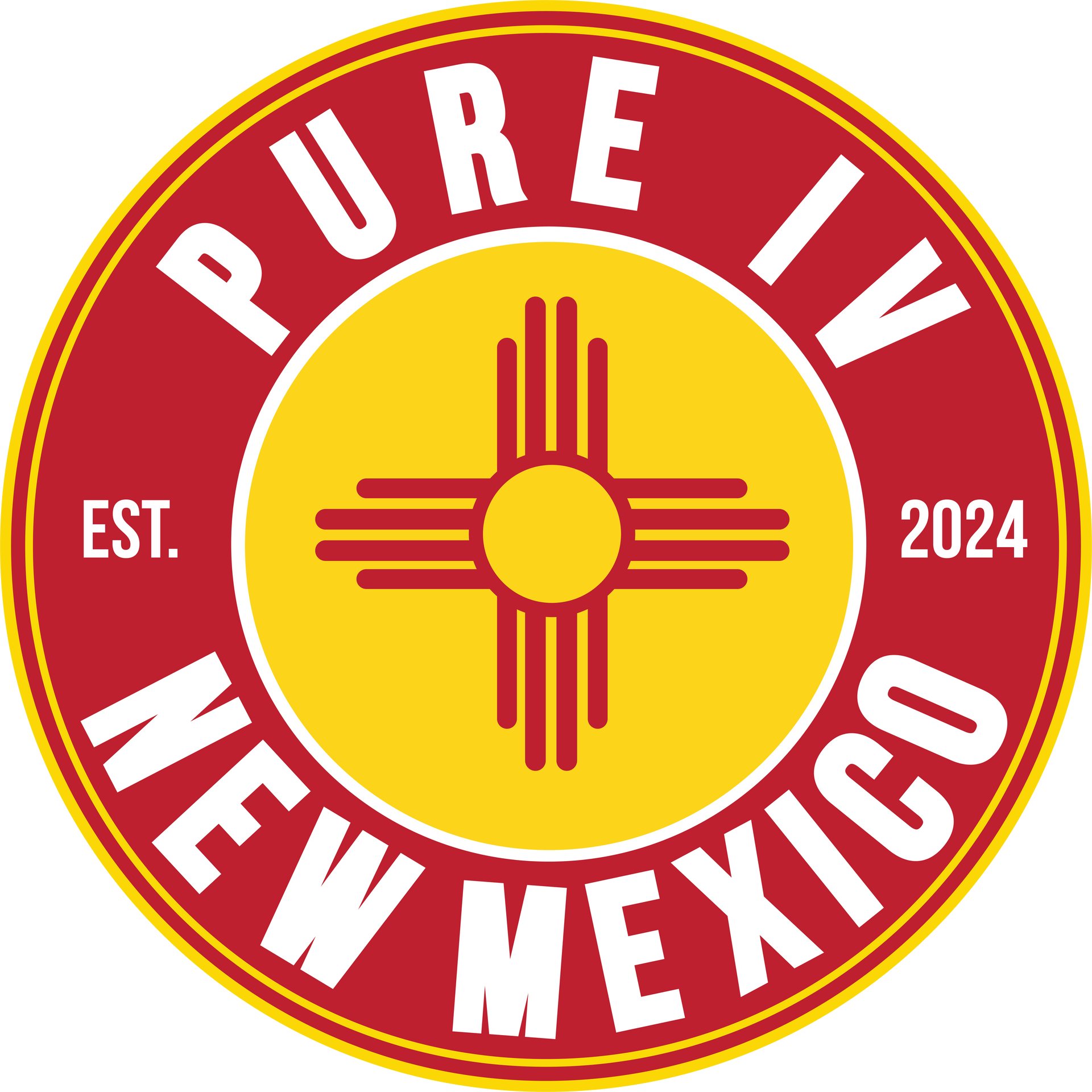Types of IV Fluids Used in IV Therapy and Their Uses

Medically reviewed by Micaela Strevay, FNP-C, PMHNP-BC
Table of Contents
IV therapy is a cornerstone of modern medicine. Intravenous fluids support patients who cannot drink enough fluids. It restores hydration, maintains fluid balance, and delivers medications or nutrients.
There are two broad categories of IV fluids: crystalloid solutions and colloid solutions. Each works differently to manage fluid volume deficit, replace fluid losses, and stabilize the body.
IV fluids are also classified based on their tonicity, which refers to their osmotic pressure relative to blood plasma:
- Isotonic solutions: Same solute concentration as plasma (e.g., 0.9% saline)
- Hypotonic solutions: Lower solute concentration than plasma (e.g., 0.45% saline)
- Hypertonic solutions: Higher solute concentration than plasma (e.g., 3% saline)
This guide explores these types of Intravenous fluids, their specific uses, and why they matter in safe body fluid management.
Crystalloids: The Most Common IV Fluids
Crystalloid solutions are the most widely used type of intravenous fluids. They are water-based and contain small dissolved molecules like salts or sugars. These molecules move easily across cell membranes, making crystalloids effective for hydration.
They are often the first choice in intravenous fluid therapy because they are safe, inexpensive, and widely available.
There are different types of crystalloid solutions, and each has its own use.
Normal Saline (0.9% Sodium Chloride)
Normal Saline is an isotonic solution containing sodium and chloride. It is used for:
- General fluid resuscitation
- Treating dehydration from various causes (vomiting, diarrhea, hemorrhage)
- Serving as a vehicle for medications or blood transfusions
- Increasing blood pressure during shock or dehydration.
Despite its uses and benefits, excessive use can cause fluid overload or raise serum sodium levels too quickly. Patients with kidney or heart conditions need careful monitoring.
Half Normal Saline (0.45% Sodium Chloride)
Half normal saline is a hypotonic solution. It provides free water while delivering some sodium chloride. It is used for:
- Correcting mild dehydration and sodium depletion at the cellular level
- Maintenance fluid during IV fluid therapy
Half normal saline is unsuitable for patients at risk of dangerously low serum sodium. It may worsen hyponatremia (a condition where blood sodium levels are dangerously low) or cause brain swelling if misused.
Lactated Ringer's Solution
Lactated Ringer's solution (LR) is an isotonic crystalloid. It contains sodium, potassium, calcium, chloride, and lactate. The lactate converts to sodium bicarbonate, which helps buffer acidity.
It is used for:
- Fluid resuscitation after burns, trauma, or surgery.
- Correcting fluid losses and electrolyte imbalances.
- Supporting pH balance in patients with metabolic acidosis.
Because of its balanced electrolytes, Lactated Ringer's solution maintains electrolyte balance better than plain saline. It is often preferred for surgical patients.
Dextrose Solutions
Dextrose solutions are crystalloid fluids containing glucose. Examples include Dextrose in Water (Dextrose 5% in water, Dextrose 10% in water).
Uses of Dextrose solutions:
- Providing calories to patients unable to eat.
- Treating low blood sugar and dehydration.
- Hydration in cases requiring energy support.
When used, they are often combined with other fluids, such as Lactated Ringer's, for tailored care.
Precaution: After metabolism, dextrose solutions act as hypotonic solutions. They move water into cells, which may lower serum sodium levels, so they require close monitoring.
Colloids: Less Common but Specialized IV Fluids
Colloid solutions contain large molecules that stay within blood vessels. They pull water in by increasing plasma colloid osmotic pressure/oncotic pressure. Oncotic pressure is the force exerted by plasma proteins that draws fluid back into the capillaries, opposing the hydrostatic pressure that pushes it out.
Human Albumin
Albumin is the most common colloid fluid. It is a natural protein that expands plasma volume.
Uses:
- Expanding blood volume in cases of shock, burns, or hypoalbuminemia.
- Supporting patients with low protein levels.
- Situations requiring rapid plasma volume expansion
- Improving circulation when crystalloids are insufficient.
For safety, Albumin must be used cautiously to avoid fluid volume overload. Monitoring is essential in patients with kidney or heart disease.
Other Colloids
Other colloid solutions include synthetic fluids such as dextrans and hetastarch. These are primarily used for rapid plasma expansion in cases of severe shock or trauma. Unlike crystalloids, they remain in the bloodstream longer and help restore circulation by increasing plasma colloid osmotic pressure.
While they are less common in wellness-focused IV therapy, they remain valuable in hospital and critical care settings where immediate volume replacement is needed.
How the Choice of IV Fluids
The right fluid depends on the patient’s condition, treatment goals, serum sodium level, extent of fluid deficits, and electrolyte imbalances.
- Fluid resuscitation often requires isotonic crystalloids like normal saline or Lactated Ringer's.
- Maintenance therapy may use half-normal saline or Dextrose solutions.
- Nutrition and energy support often involve Dextrose in Water combined with electrolyte solutions.
- Severe fluid deficit or low plasma protein may require colloid solutions.
Body fluid management also considers underlying conditions. For example, patients with acidosis may benefit from Balanced IV fluid solutions like LR.
Safety and Considerations in IV Fluid Use
Although effective, IV fluids are not risk-free. Potential complications include:
- Fluid overload, especially in patients with kidney or heart conditions.
- Dangerous electrolyte shifts affecting serum sodium or potassium levels.
- Risks of infection or vein irritation from IV insertion.
Professional evaluation ensures safe fluid and electrolyte therapy. Licensed providers may use a fluid challenge to test tolerance. Monitoring is key to preventing complications.
Where to Get Professional IV Therapy in New Mexico

For those seeking safe and effective IV therapy in New Mexico, Pure IV New Mexico is your go-to IV therapy provider.
At Pure IV New Mexico, our licensed medical team delivers safe and effective IV hydration therapy tailored to your needs. Whether you are recovering from dehydration, illness, or simply want to restore fluid balance, our treatments are designed to support your health.
And with our convenient mobile services, you can receive care in the comfort of your home, office, or hotel.
Book your personalized treatment today with Pure IV New Mexico and experience professional hydration therapy that restores strength, balance, and overall well-being.



